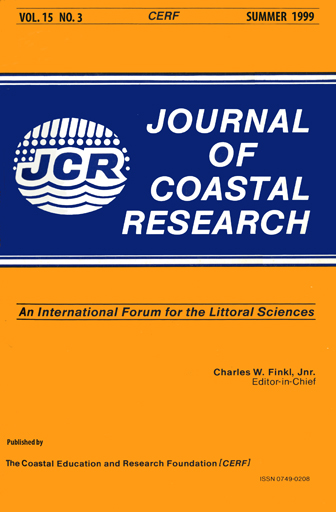Holocene Sea-Level Change at Port Pirie, South Australia: A Contribution to Global Sea-Level Rise Estimates from Tide Gauges
Keywords:
Sea-level indicators, intertidal sedimentary sequence, hydro-isostasy, tidal record, greenhouse.Abstract
Modern tidal sediments (subtidal, intertidal and supratidal ) at Port Pirie, South Australia, were surveyed to tidal datum (TD) and Australian Height Datum (AHD) and used to interpret the nature and elevation of preserved intertidal sediment facies in the subsurface. Vibrocores and excavations along three shore-normal transects provided a wealth of palaeo sea-level indicators that included in situ sea grass, mangrove and samphire (saltmarsh) vegetation remains and articulated bivalves characteristic of these facies and now elevated by more than 2.0 m above their contemporary positions.
Radiocarbon dates at or close to the boundaries between key sediment facies provide a rigorous chronological framework for mid to late Holocene sea-level change. These reveal that, at Port Pirie, there has been a consistent relative fall in sea-level from a mid-Holocene highstand of 2.2 m at 6,700 years BP. This long-term rate of sea-level fall of 0.33 mm yr-1 is attributed to isostatic upwarp of the coast that accompanied and postdated the Holocene transgression. The isostatic component of land level change is geographically variable, increasing systematically up the local gulf waters with distance from the continental margin.
Isostatic and other neotectonic effects produce millennial-scale land level changes that significantly affect the secular trend of sea-level observed in decadal-scale tide gauge records. At Port Pirie, the historical sea-level trend derived from 64 years of tidal records is - 0.02 mm yr-1. Neotectonics essentially masks a decadal secular sea -level rise of 0.31 mm yr-1.
Neotectonic effects are geographically highly variable. Consequently, their quantification at tide gauge sites is an essential element in the detection of any secular or "greenhouse" sea- level signature from tide gauge data. Several case studies are now documented in southern Australia of both positive and negative contributions to the gross secular sea -level trend at tide gauge sites. Neotectonic corrections at these sites indicate that sea-level is rising but at a rate much slower than present global estimates of greenhouse sea-level rise.

